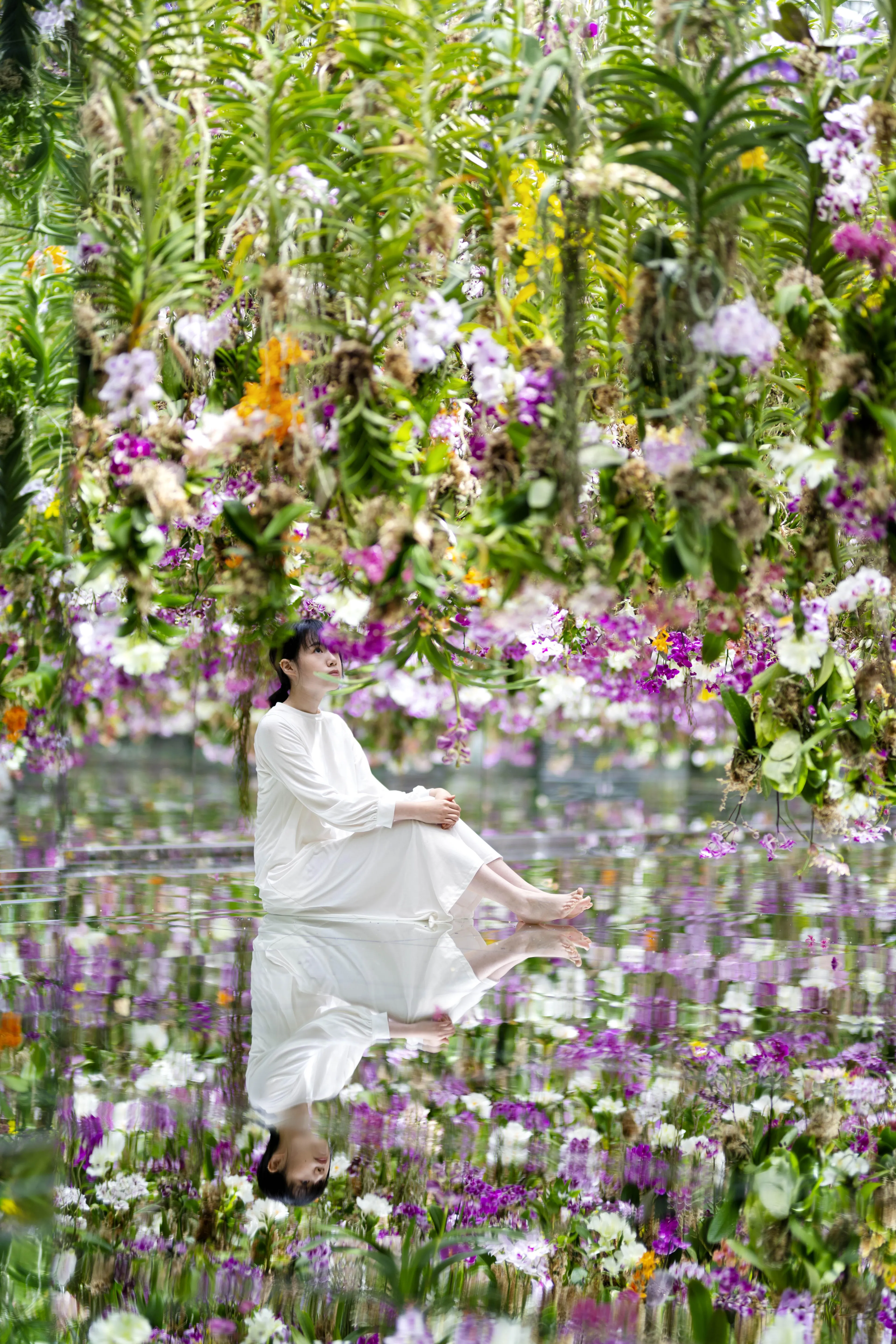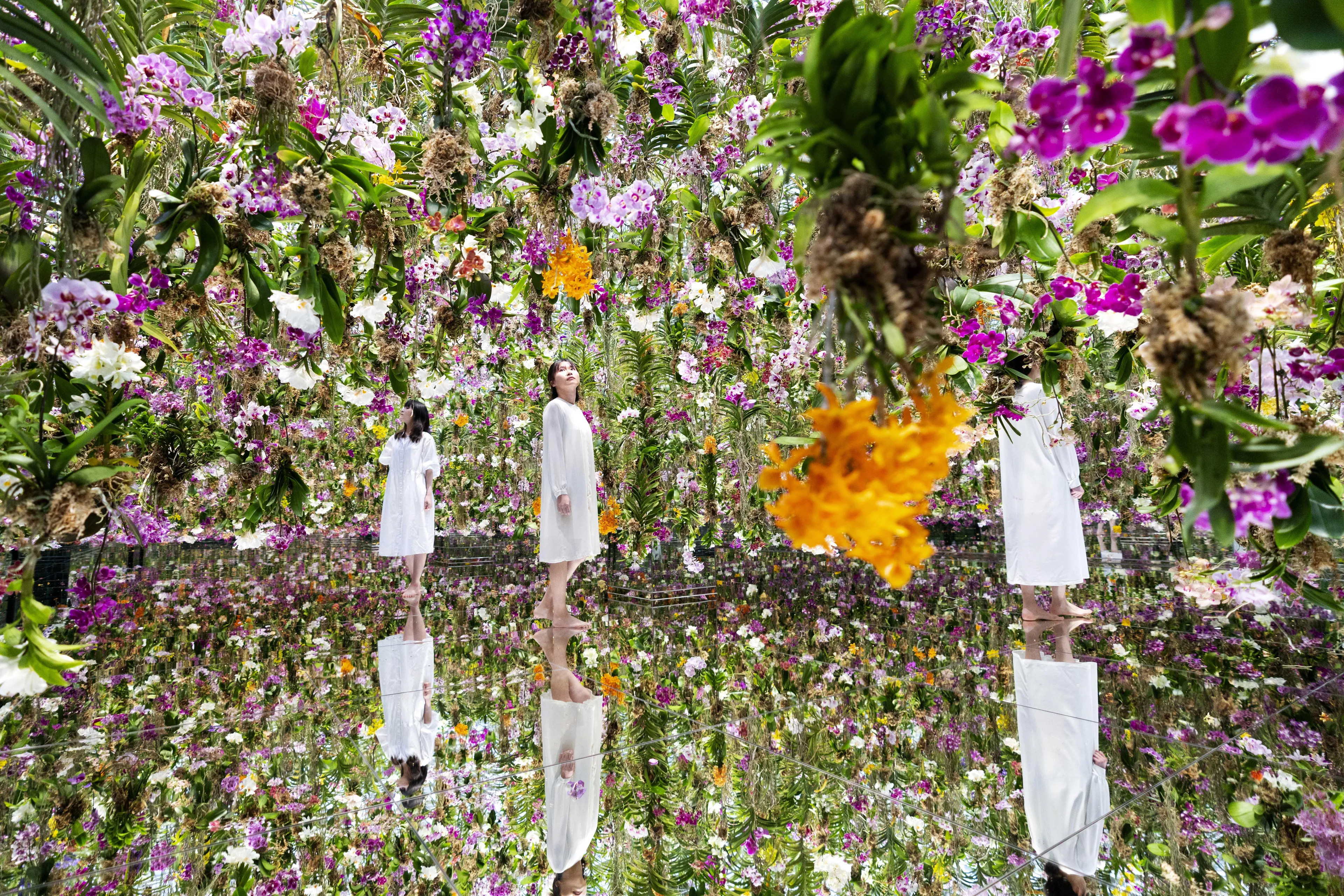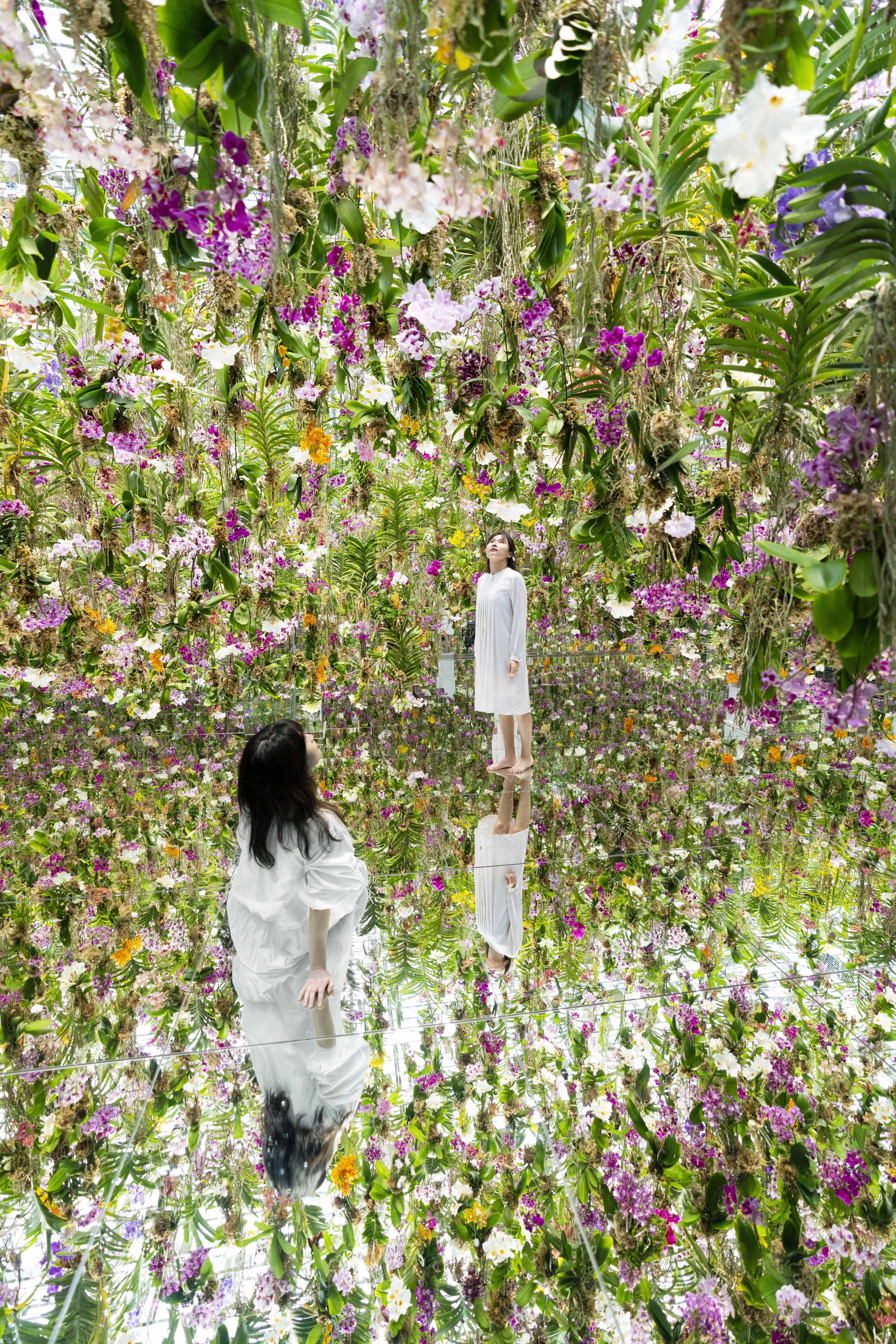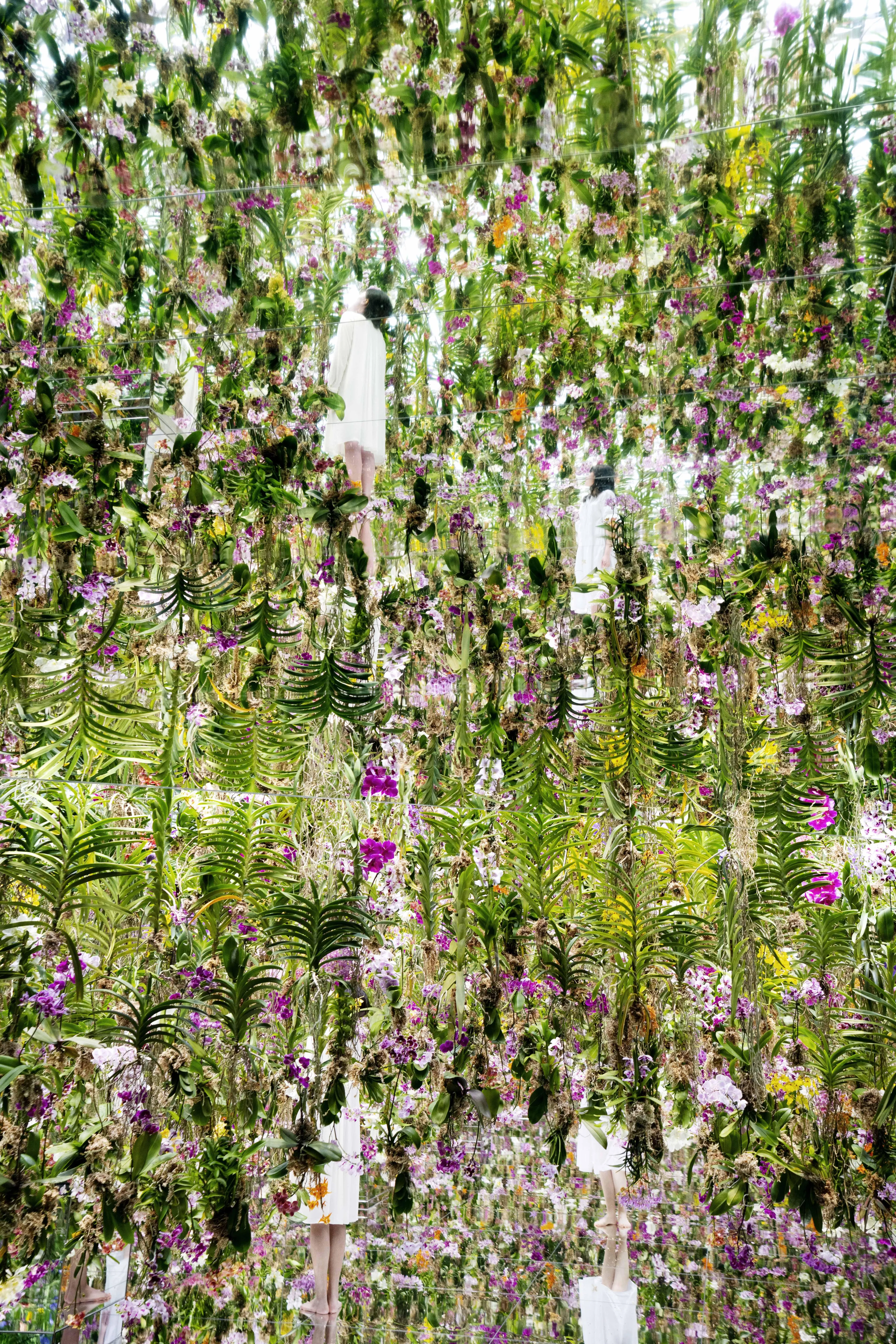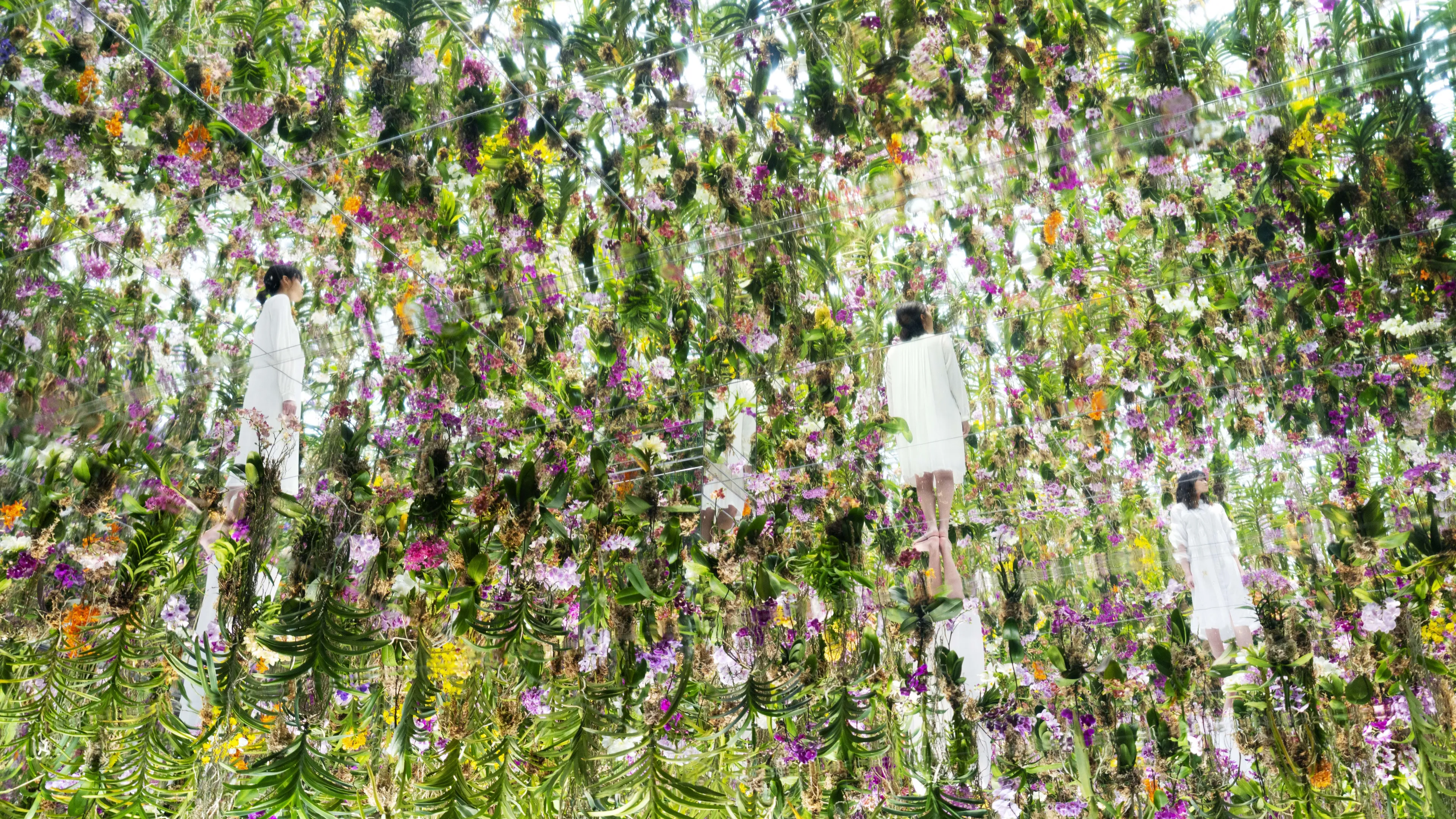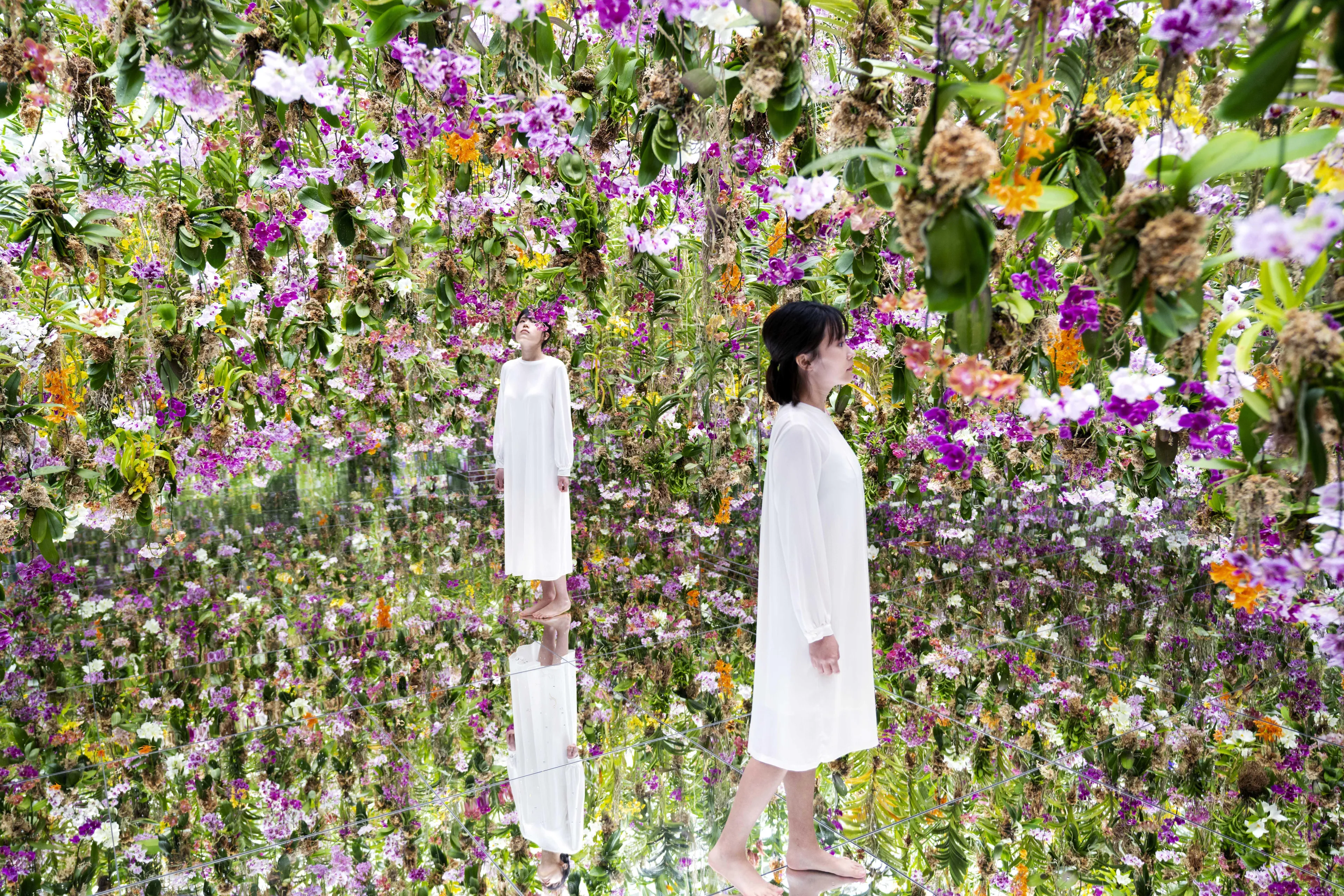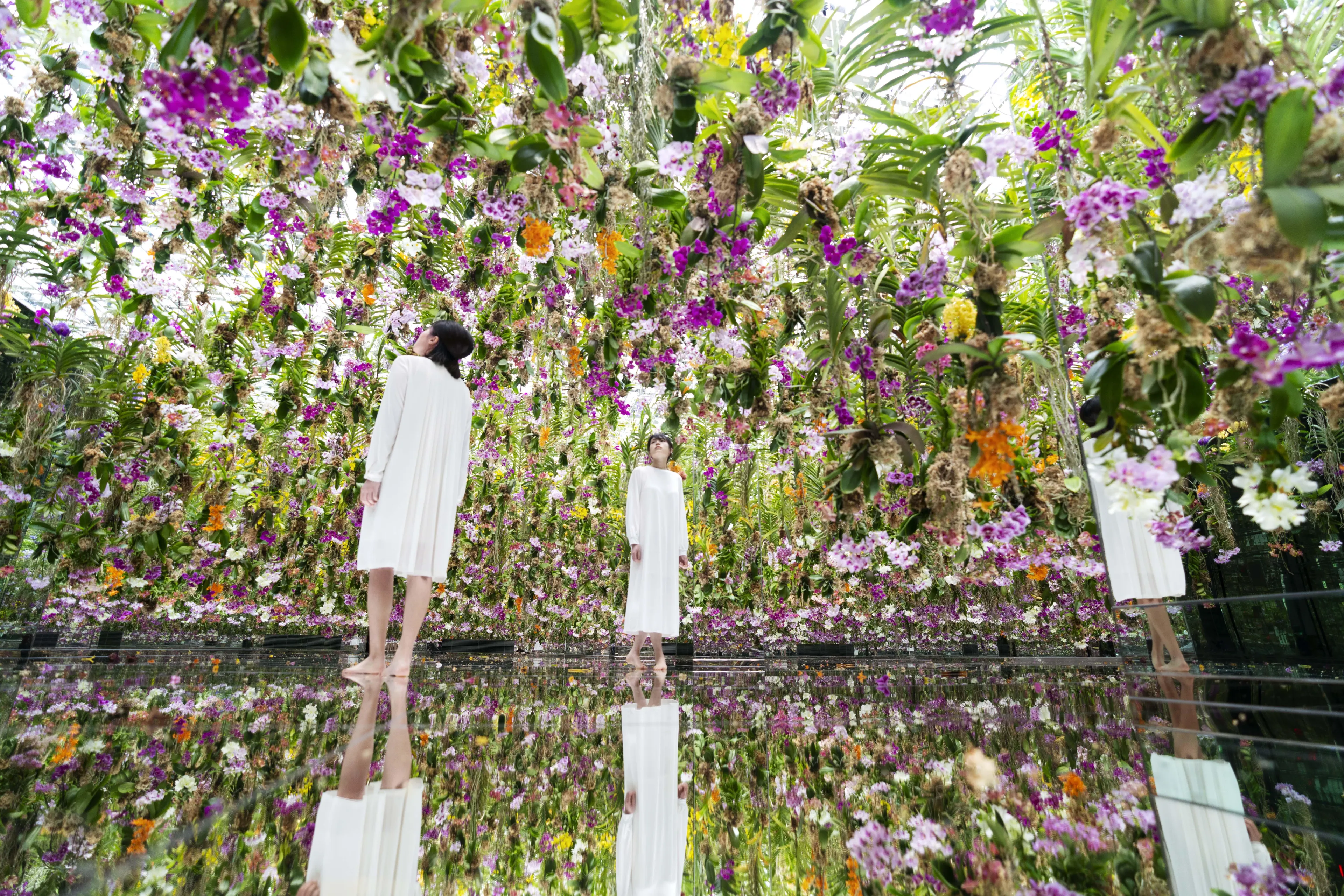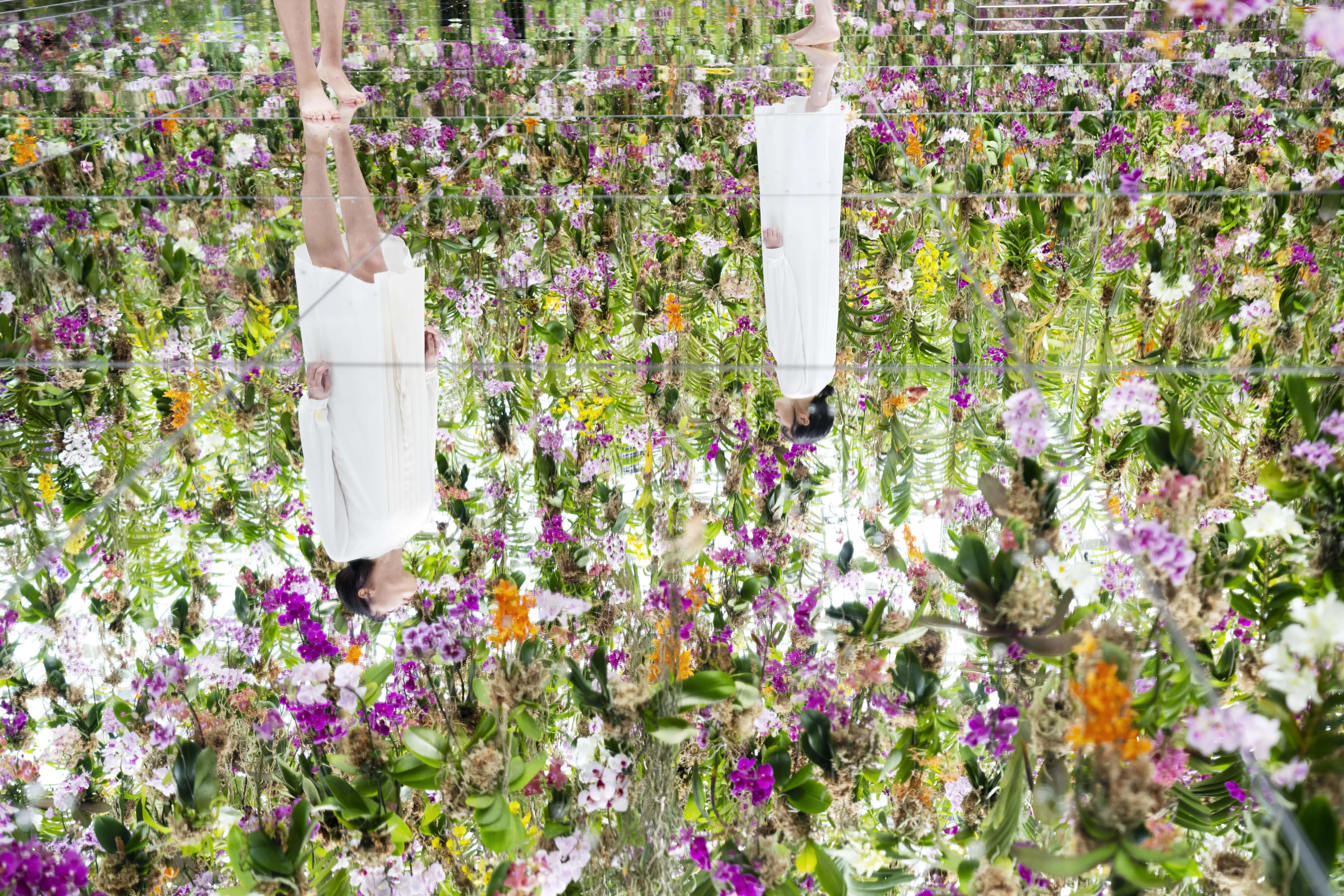Floating Flower Garden: Flowers and I are of the Same Root, the Garden and I are One
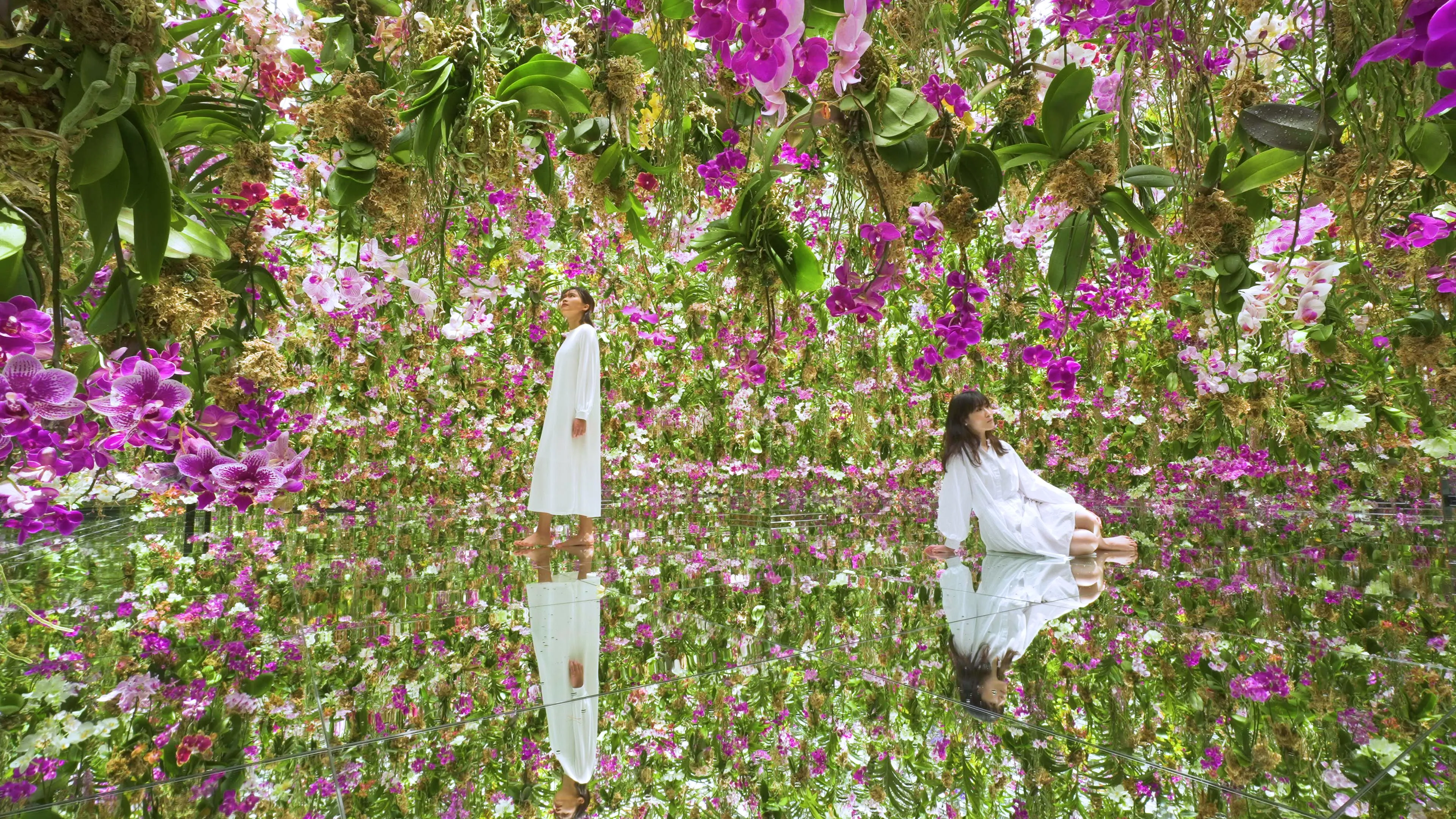

Floating Flower Garden: Flowers and I are of the Same Root, the Garden and I are One
This floating flower garden consists of a three-dimensional mass of flowers.
The artwork space is completely filled with flowers, but as the flowers float up above people, open spaces are created. Because of this, people are able to freely wander around the flower mass space. If you encounter other people within the artwork, your space will connect with theirs and become one single space.
Zen gardens are said to have been created as a place for groups of Zen priests to carry out training in order to become one with nature.
There is a Zen kōan (a question or story that is part of Zen priests’ theological training) called “Nansen’s Flower”. Someone asked the monk Nansen about the famous saying, “Heaven and I are of the same root. All things and I are of the same substance”, remarking on how wonderful it was. Nansen, pointing to a flower in the garden, said, “People these days see this flower as if they were in a dream”.
In this work, people immerse themselves in flowers, becoming one with the garden. When someone continues to look at a flower closely, the flower looks back. At that moment, they become one with the flower and may truly see flowers for the first time.
The flowers in this artwork are orchids. Most orchids are able to grow without soil by absorbing water from the air. The flowers in this artwork are alive, growing, and blooming with each passing day. It could be said that they are growing in mid-air.
Although flowering plants were the last of the plant species to appear on earth, at least 220,000 of the 250,000 terrestrial plant species are flowering plants. Evolution has favored diversity, and it can be said that flowers were born to produce diversity. Orchids were flowering plants that most enjoyed diversity, and it is said that approximately 10% of all plant species belong to the orchid family. Because of their diversity, many orchids evolved to become most adapted to live on rocks and trees instead of land with soil where other plants grew abundantly. In an area without soil, in other words, traditionally a least favorable environment for plants, orchids evolved to be most adapted for a world without competition. They are thought to have appeared at a later stage of evolution compared to other plants, and continue to diversify to this day, making us wonder what evolution chose to favor.
Orchids are known to have co-evolved with certain pollen-carrying insects. The flowers’ aromas become stronger at the time of day when the partner insects are active. Because of this, the scent of the artwork space changes each moment between morning, day, evening, and night. Since many of the orchids in this work are partnered with nocturnal insects, the tightly-packed orchids produce a powerful fragrance at night.

